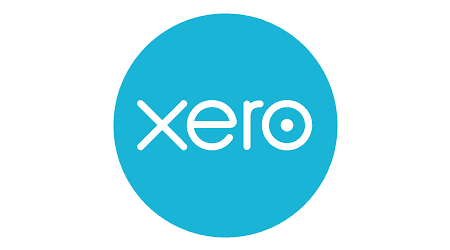-
Commitment to our readers
18 years
Helping you save money
Reviewed
by experts
Cited by
major publications
Finder maintains full editorial independence to ensure for our readers a fair assessment of the products, brands, and services we write about. That independence helps us maintain our reader's trust, which is what keeps you coming back to our site. We uphold a rigorous editorial process that ensures what we write and publish is fair, accurate, and trustworthy — and not influenced by how we make money.
We're committed to empowering our readers to make sound and often unfamiliar financial decisions.
We break down and digest information information about a topic, product, brand or service to help our readers find what they're looking for — whether that's saving money, getting better rewards or simply learning something new — and cover any questions you might not have even thought of yet. We do this by leading with empathy, leaning on plain and conversational language that speaks directly, without speaking down.
How does payroll work?
Every business with employees has to process payroll. Payroll is the process of paying your employees and tracking factors like hours worked and salaries to comply with labor and tax laws. It involves calculating wages, withholding taxes and sending payments to your workers as well as the IRS.
How to do payroll in 7 steps
1. Decide who is processing payroll
There are three main ways to process payroll: You can do it on your own, with the help of automated software or with the aid of an accountant. Processing payroll on your own may be less expensive but requires very careful attention to detail. However, you can access various software services to streamline the process. These cost around $30 to $150 a month, plus the cost of each employee, which could range from $2 to $15. Still, automated software can help save you time. Manually tracking wages, withholdings, salaries and various other variables can take hours for someone with a large workforce.
If you’re using a payroll software, make sure it can easily integrate into your business bank account.
2. Have employees fill out W-4 forms and required tax documents
Before you can begin the payroll process, every employee you hire needs to fill out their W-4 forms, which indicates their filing status, among other factors. They also need to fill out I-9 forms to verify their identity and employment eligibility.
As an employer, you also need to make sure you have an Employee Identification Number (EIN) or Federal Tax Identification. This identifies your business entity for taxation purposes. You can apply for one on the IRS website.
3. Choose a payroll schedule
After you’ve collected the proper tax forms from your employees, you need to decide how you want to pay your employees. There are four common pay schedules.
- Weekly
- Bi-weekly
- Semi-weekly
- Monthly
Be sure to check with the Department of Labor and state authorities to learn about laws and rules surrounding how you pay employees. For instance, some states require employers to pay hourly workers weekly.
4. Record gross pay
You need to document and track the gross pay for each employee during any given pay period. You do this by multiplying a worker’s hourly rate by the number of hours worked during a given pay period. A spreadsheet or payroll software can help you easily track workers’ gross pay while making the right calculations.
5. Calculate deductions, allowances and other withholdings
To properly process payroll, you need to calculate and record the deductions and allowances for every employee. You can find the allowances for each employee on their W-4 forms. And deductions are specified on their 1040-EZ form.
You also need to calculate other withholdings your employees may have. These can include the following.
- Federal, state and local taxes
- Social Security
- Medicare
- 401(k) contributions
- Workers’ compensation contributions
6. Determine net pay for employees
Net pay is what an employee gets paid every pay period after deductions. Also called take-home pay, net pay is something you can track on a spreadsheet or with the help of software. By creating pay stubs for each employee, you can track withholding for tax purposes.
7. Calculate payroll taxes
Payroll taxes are state, local and federal taxes that you need to withhold from each employee’s paycheck. It includes income taxes, as well as Social Security and Medicare taxes. You need to keep track of this and then pay your payroll taxes come tax time.
In addition, you may need to pay other business taxes without deducting these from employee paychecks. These can include the following:
- Federal unemployment tax (FUTA)
- State unemployment tax (SUTA)
- State unemployment insurance (SUI)
- Federal Insurance Contributions Act (FICA) taxes
Bottom line
Processing payroll is an important part of a business’ process. It’s crucial to accurately track and report what you pay employees, deductions, withholdings and other factors. But doing it on your own can be complex, especially for large companies. A payroll software can help you complete the process with software that can track metrics like hours worked, wages and withholdings for each employee much faster than you can on your own. And don’t forget to check that your business checking account easily integrates with your payroll software.
Easy business accounting
Accounting software made for small businesses and sole traders.
- Automated sales tax for all the states you're registered.
- Dashboard for cash flow, including overdue invoices and outstanding bills.
- Automated time and expense tracking.
- Exclusive: Get 90% off Xero for 6 months. No promo code needed.
Ask a question
More guides on Finder
-
33 Boring Businesses That Make Money in 2025
Find out which boring businesses generate steady income and how to fund your path to success.
-
What is a sole proprietorship?
Run your own business and keep all the profits through a sole proprietorship.
-
What is an LLC?
An LLC can provide certain tax benefits and liability protection to its members.
-
How to start a franchise
To start a franchise business, you’ll need to evaluate costs and financing options, write a business plan, hire employees and more.
-
How to hire an employee
Learn how to hire employees for your business in 13 steps, from writing the job description to finalizing your new hire.
-
Small business accounting: What is it and how to start
Mastering the accounting and bookkeeping for your business can help maximize success and minimize penalties.
-
How to write a business plan
Your business plan should include a mission statement, goals and strategies. See a step-by-step guide to writing a successful business plan.
-
How much does it cost to start a business?
Startup costs can be steep, but there are various funding options to help make launching your business more affordable.
-
New business statistics: 2005 to April 2025
Data related to the number of business applications lodged in the US each year, along with how many of those may turn into fully fledged businesses.


